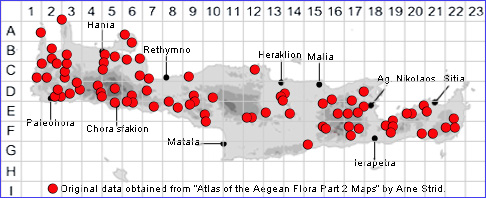SPECIES DESCRIPTION
SCUTELLARIA SIEBERI
Family and Genus:- See- LABIATAE
Common Names:- None
Homotypic Synonyms:- None
Meaning:-Scutellaria (L) Dish, reference to the fruiting calyx.
Sieberi (L) For the botanist Franz Wilhelm Sieber (1785-1844).
General description:- Velutinous-tomentose, perennial plant.
Stems:-
1) 15-40 cm, ascending, sparingly branched, eglandular-puberulent, sometimes
also with short glandular hairs above.
Leaves:-
1) Rather long-petiolate.
2) Blade, 2-5 cm, ovate, truncate to slightly cordate at the base, coarsely crenate-
dentate, puberulent on both sides.
Flowers:-
1) In a rather long, dense, secund spike, internodes, c. 5 mm.
2) Bracts, exceeding the calyx, entire.
3) Calyx, green or pale purplish.
4) Corolla, 12-16 mm, cream, usually without spots or markings.
Key features:-
1) Corolla, less than 18 mm.
2) Inflorescence, internodes c. 5 mm.
3) Leaves, 2-4(-5·5) cm.
4) Bracts exceeding calyx.
Habitat:- Crevices and ledges of limestone cliffs in gorges, rocky road
embankments, often in semi-shade. 0-1100 m. (rarely higher).
Distribution:- Cretan endemic. Widespread and common.
Flowering time:- Late Mar to early June.
Photos by:- Steve Lenton

